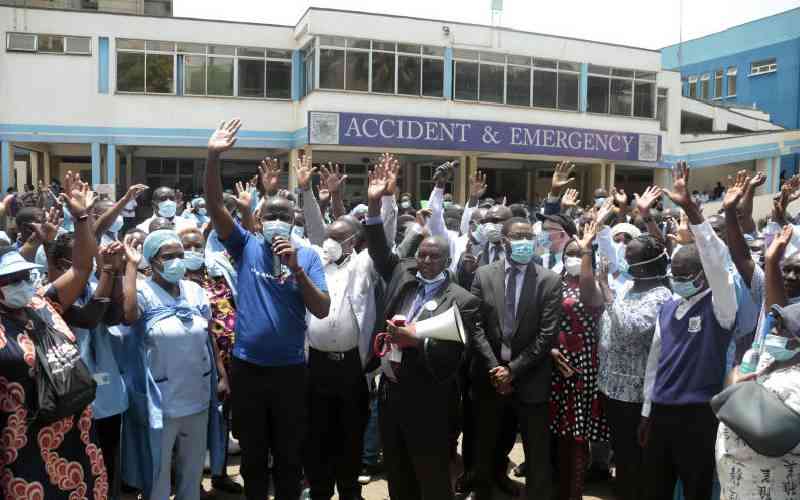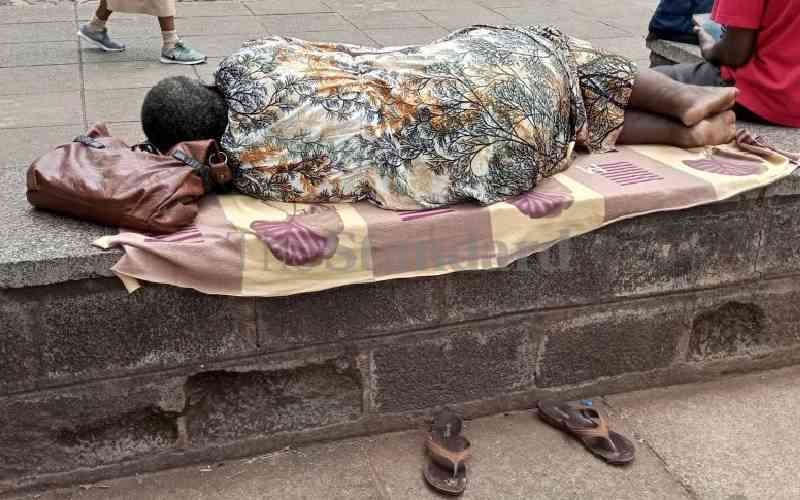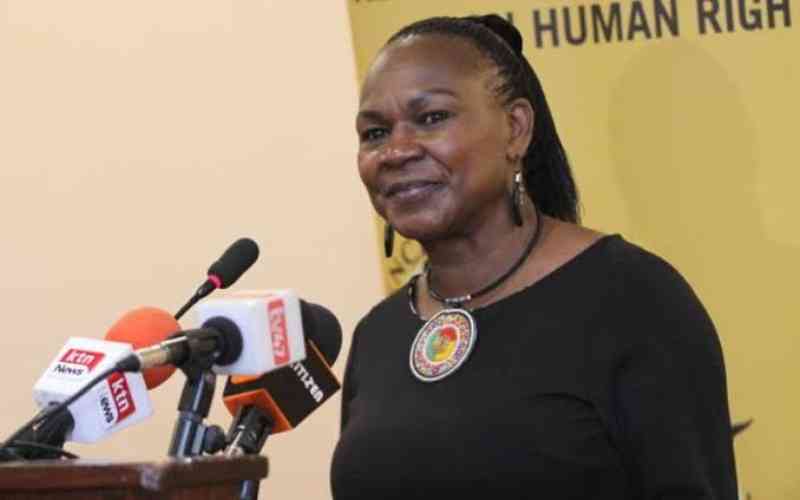
What started as a flu nearly 20 years ago has seen Andrew Zadock visit numerous hospitals with the doctors trying to diagnose a swelling in his nasal cavity. The 65-year-old lives on hope that he will get a reprieve from pain.
I fell sick early 2002 while I was in Kisumu where I sold household items. I had just moved to the town after many years of working on construction sites in Nairobi. I decided to quit the construction job after I fell from a building and sustained injuries that took long to heal.
Back in Kisumu, I was down with what I though was a flu. At first, I took tablets to unblock my nostrils and to ease my cold. But the tablets didn’t help. Since I was not in pain, I continued with my business and kept taking medication for what I thought was flu.For nearly 10 years, I tried to manage my blocked nostrils through herbal medication and self-medication since I wasn’t in pain.
In 2014, my forehead started swelling, down to my eyes, my nose and my mouth. For months, I tried to ignore the swelling until it became painful. I thought my condition was serious when a friend hinted that I might be having a growth on my face. I went the hospital and doctors recommended an x-ray after giving me medication to ease my pain.
But those who carried out the x-ray within the facility did not give a proper report that could be interpreted by the doctor. I was frustrated after a lot of back and forth with the doctor and decided to go back to my business without receiving a full diagnosis and treatment.
In March 2018, I went to another hospital in Kisumu, this time with a very swollen face. The right eye was always teary and I felt pressure around my eyes and my forehead because of the swelling. Also, the eye had started to budge out of its socket. I could feel the swelling on the roof of my mouth and in my nasal cavity which made breathing very strenuous.
Doctors conducted a CT scan that revealed that an abnormal mass of cells was growing in my nasal cavity, in the eye sockets and in my mouth. The tests revealed that the tumor was rapidly growing and filling my nasal and oral cavity, thereby obstructing air passage through my nose. The tumor had started eroding some soft tissues in these cavities and between my eyes and in my forehead. In fact, there was a slight penetration of the mass into my frontal bone (bone in the skull).
Doctors diagnosed me with PNS tumor (paranasal sinus tumor) and referred me to Kenyatta National Hospital for further management to kill the abnormal cells. At KNH, I dropped out of the medical process midway when the consultations became a tedious and costly process. Finding no reliable accommodation in Nairobi and without funds to cover the doctors’ visits, I decided to go back to Kisumu.
My condition was deteriorating with each day I stayed at home in Kisumu. I was alone through the whole process. My marriage broke in 1984, shortly after the death of our son and so I was alone throughout the whole process. I now stay at my brother’s house in Luanda, Vihiga.
My face is still swollen and very painful. I have lost sight totally in one eye. I always have headaches. In December last year, I tried another stint at KNH and abandoned the process midway because of lack of funds and accommodation. My family members in Nairobi suggested that I seek help at Kakamega Referral Hospital where they said I could access medication from home in Vihiga. But doctors at Jaramogi Oginga Odinga Teaching and Referral Hospital had told me that my condition could only be treated at KNH or in Eldoret’s Moi Teaching and Referral Hospital. Anyway, a doctor at Kakamega Teaching and Referral Hospital took samples of my blood for fresh tests and promised to get back to me. That is what I am waiting for.
I feel that I have become a burden to people who are closest to me. I can see it and I feel sorry for them since they have tried all they could to help me. I am in constant pain and I can’t do anything on my own. My only brother who took me in is paralysed and the two of us are usually of little help to each other when my nephew goes to work. I thank God for my nephew who has been my biggest source of strength. And my encouragement to people going through a similar situation, or worse, is to trust in God. I have contemplated suicide countless times but found strength in God that keeps me moving, hoping that help will come soon.
About Paranasal tumors (PNS)
Mayoclinic.org defines nasal and paranasal tumours as abnormal growths that begin in and around the passageway within the nose (nasal cavity). While nasal tumours begin in the nasal cavity, paranasal tumors begin in air-filled chambers around the nose called the paranasal sinuses.
Nasal and paranasal tumours can be noncancerous (benign) or they can be cancerous (malignant).
Stay informed. Subscribe to our newsletter
Causes of PNS
Genetic mutation that turn normal, healthy cells into abnormal cells. The abnormal cells grow and multiply out of control, and unlike normal cells, they don’t die. They accumulate to form a tumour.
Risk factors include:
· Smoking and being around people who are smoking
· Breathing in polluted air
· Long-term exposure to chemicals and irritants
· Infection with human papillomavirus (HPV), a sexually transmitted infection
Symptoms of PNS
They include the following
· Difficulty breathing through the nose
· Loss of the sense of smell
· Nosebleeds
· Discharge from the nose
· Facial swelling or pain
· Watery eyes
· A sore or lesion on the roof of the mouth
· Vision problems
· A lump in the neck
· Difficulty opening your mouth
Diagnosis involves biopsy and imaging tests such as CT scan and an MRI.
Treatment of PNS
It depends on where your tumour is located and what types of cells are involved. Treatment options include the following
· Surgery to remove the tumour
· Radiation therapy that uses high-powered energy, such as X-rays and protons, to kill cancer cells
· Chemotherapy where a drug treatment using chemicals kills cancer cells.
 The Standard Group Plc is a
multi-media organization with investments in media platforms spanning newspaper
print operations, television, radio broadcasting, digital and online services. The
Standard Group is recognized as a leading multi-media house in Kenya with a key
influence in matters of national and international interest.
The Standard Group Plc is a
multi-media organization with investments in media platforms spanning newspaper
print operations, television, radio broadcasting, digital and online services. The
Standard Group is recognized as a leading multi-media house in Kenya with a key
influence in matters of national and international interest.
 The Standard Group Plc is a
multi-media organization with investments in media platforms spanning newspaper
print operations, television, radio broadcasting, digital and online services. The
Standard Group is recognized as a leading multi-media house in Kenya with a key
influence in matters of national and international interest.
The Standard Group Plc is a
multi-media organization with investments in media platforms spanning newspaper
print operations, television, radio broadcasting, digital and online services. The
Standard Group is recognized as a leading multi-media house in Kenya with a key
influence in matters of national and international interest.









